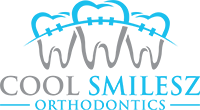Myofunctional Orthodontics
What is myofunctional orthodontics
Myofunctional orthodontics is a specialized field that focuses on improving facial growth and development by addressing muscle function and oral habits. Unlike traditional braces, which primarily correct tooth alignment, myofunctional orthodontics works to address underlying issues that may be contributing to misalignment or facial imbalances.
This approach often involves the use of oral appliances, exercises, and therapy to help train the tongue, lips, and jaw muscles to function properly.
By addressing these underlying issues, myofunctional orthodontics aims to create a more harmonious facial profile, improve breathing, and enhance overall oral health.
Myofunctional orthodontics can help address various oral problems
Tongue Thrust: This occurs when the tongue is pushed forward against the teeth during swallowing, speech, or at rest. It can contribute to misaligned teeth, open bite, and difficulty with speech sounds.
Mouth Breathing: Habitual mouth breathing can lead to dry mouth, dental problems, and even facial changes. Myofunctional therapy helps retrain the tongue and lips to properly seal the mouth during rest and sleep.
Hypernasality: This occurs when too much air escapes through the nose during speech, causing a nasal-sounding voice. Myofunctional therapy can help strengthen the muscles involved in closing the velum, which is the soft tissue at the back of the roof of the mouth.
Hypomobility: This refers to limited movement or range of motion of the tongue, lips, or jaw. Myofunctional therapy can help improve muscle strength and coordination, allowing for better speech and swallowing function.
How does myofunctional orthodontics work
Myofunctional orthodontics is a specialized approach to improving oral health and facial development by addressing the relationship between the muscles involved in chewing, swallowing, and breathing with the teeth and jaw. It focuses on retraining these muscles to function properly, which can help to correct misalignments, improve facial balance, and enhance overall oral health.
The treatment involves a series of exercises and techniques designed to address specific muscle imbalances and improve oral function. These may include tongue exercises to strengthen and position the tongue correctly, lip exercises to improve lip seal and tension, and breathing exercises to promote nasal breathing and reduce mouth breathing.
By retraining these muscles, myofunctional orthodontics can help to create a more harmonious relationship between the teeth, jaws, and surrounding tissues, leading to a healthier and more aesthetically pleasing smile.
Myofunctional Orthodontics Research
Research indicates that proper arch development in children can positively impact oral functions, including speech. The alignment of the jaw and proper positioning of the tongue play crucial roles in speech production. Studies suggest that issues with arch development, such as narrow dental arches or malocclusions, might contribute to speech difficulties by affecting tongue placement and oral muscle coordination.
Speech therapy often focuses on addressing articulation, phonological awareness, and oral motor skills. In cases where arch development issues impact speech, therapists may work collaboratively with orthodontists or other dental professionals to address oral structural concerns, aiding in better speech outcomes for individuals.
However, it’s essential to note that the relationship between arch development and speech therapy outcomes can vary based on individual circumstances, and not all speech issues are solely due to dental or oral structure factors. Consultation with both a speech therapist and a dental professional would be necessary for a comprehensive understanding and tailored intervention plan for a particular case.



